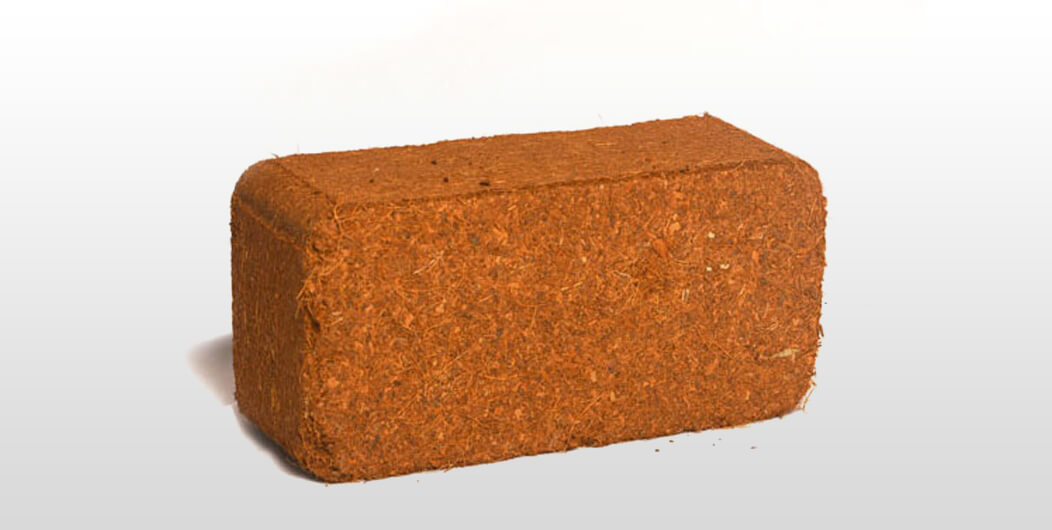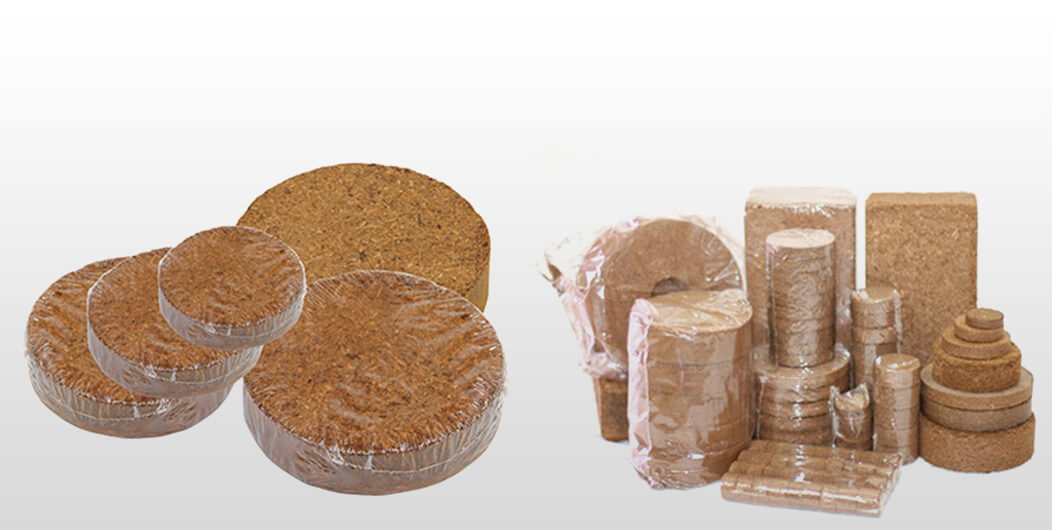

Coco peat is a non-fibrous, spongy, lightweight, corky material that holds the coir fibre in coconut husk together. Also known as coco pith, coco peat is a 100% organic, natural and biodegradable substance that was the by-product of the coconut fibre extraction process.
The possible use of coco peat in horticulture, animal husbandry, and other industries were discovered in the early 1990s creating a global market for a by-product of the coconut fibre industry in Sri Lanka.
The modern coco peat manufacturing process includes a six-step path to improve the quality of coco peat and make it easy to pack, transports and store;
Coconut husks are processed at coconut fibre mills in Sri Lanka to extract coir fibre, leaving behind the coco peat or coir pith, a spongy material that binds the coconut fibre in the husk. It is also the main raw material for coco peat-based products.
Depending on the requirement of the plant/buyer, coir pith is washed with fresh water to lower the electrical conductivity which is a measure of the salt content so that plant roots can absorb water efficiently
Wet coco peat or coir pith is then sun-dried to reduce the moisture content to the globally expected value to achieve the required compaction
After being dried, coir pith is sorted based on their electrical conductivity and moisture level
Sorted coco peat is then sifted and sieved to remove the fine dust particles and extract the right sized grains as per the industry and requirement specification.
Finally, the coco peat mixture is compacted in hydraulic presses to the required size. This is done to make it easy to pack, store and transport.
Environment-friendly, biodegradable and resistant to fungal and microbial activities, coco peat can be reused in many instances up to five years.
Coco peat’s spongy structure assures high absorption of water and other liquids, high moisture retention quality while coco peat also buffers water-soluble nutrients, creating a backup of nutrients for plants. Its porous structure also assures improved soil aeration and increased soil buffering capacity.
Moreover, coco peat has a range of other characteristics like high cation exchange capacity and tolerance to pH variations, which enhances its usefulness across industries.
Coco peat is a popular growing medium or a substrate used in various kinds of cultivation from hobbyists’ terrariums, urban rooftop gardens, large greenhouses to traditional farms and nurseries. In every instance coco peat act as a cultivator’s friend by providing numerous benefits and uses;
The porous and spongy structure of coco peat, lightweight and high cation exchange capacity makes it a useful material across industries;
The high water absorption quality of coco peat makes it an ideal animal bedding material when mixed with coco chips to be used in horse stables, as well as for cages of lizards, spiders, frogs and snakes.
Sri Lankan coco peat manufacturers produce a range of products to the global market including,
Available in retail and bulk sizes peat bricks, briquettes, and discs can be re-wet and used directly as a substrate or mixed with soil or other growing mediums. Dry coco peat blocks and dry loose coco peat are also used as absorbents in chemical and petroleum industries, as well as in large farms for mulching and to retain herbicide and pesticides.
Sri Lankan coco peat producers also manufacture loose coco peat packed in bulk or retail size packs that are buffered out of Calcium Nitrate. It is extremely low in potassium and a 100% natural medium with a very low Electric Conductivity (EC) Level. Loose pack coco peat is used in nurseries as well as a medium of insulation.
Sri Lanka is the fourth largest exporter of fresh and dried coconut products in the world with popular exports including desiccated coconut, brown fibre, virgin coconut oil, and coconut water which are available through a number of exporters.
Coconut & Coconut based Products
Info
Directory
eMARKETPLACE
Coconut Peat Products
Directory
eMARKETPLACE
Coconut Ekel products
Directory
eMARKETPLACE
Coconut Water Products
Directory
eMARKETPLACE
Coconut Kernel Products
Directory
eMARKETPLACE
Coconut Fiber Products
Directory
eMARKETPLACE
Coconut Shell Products
Directory
eMARKETPLACE